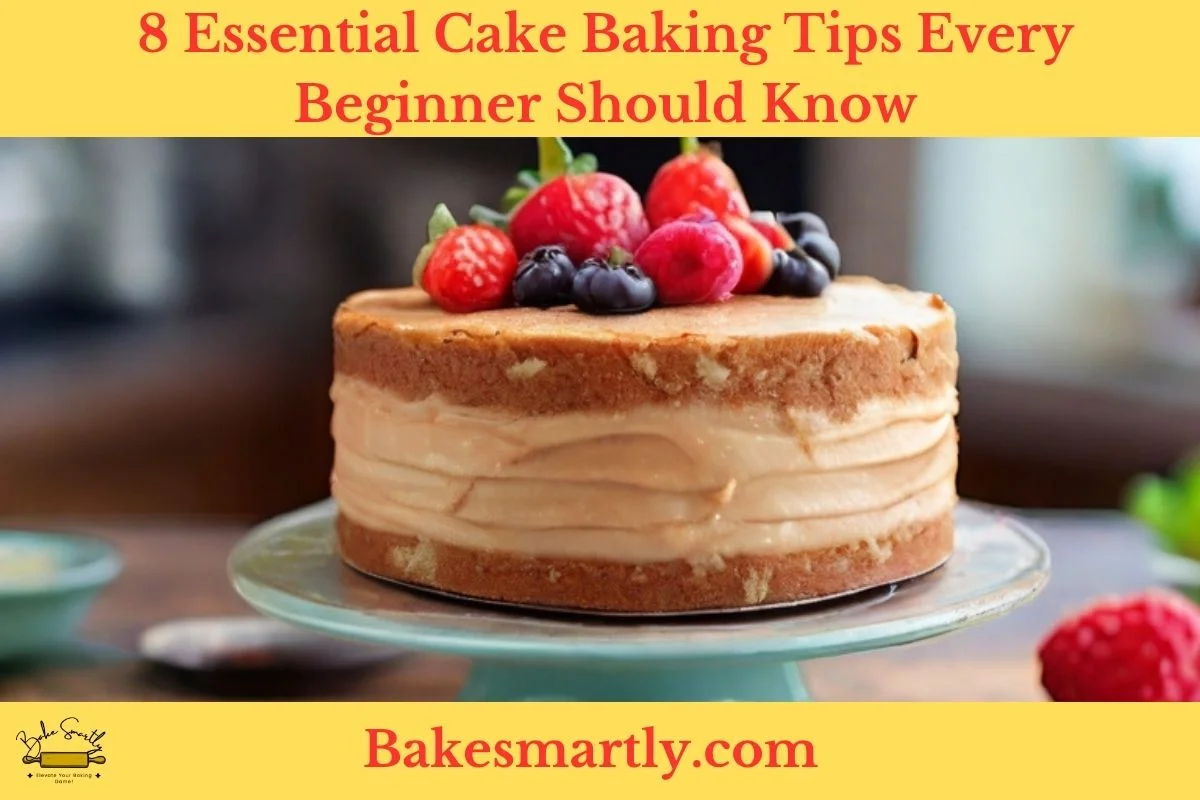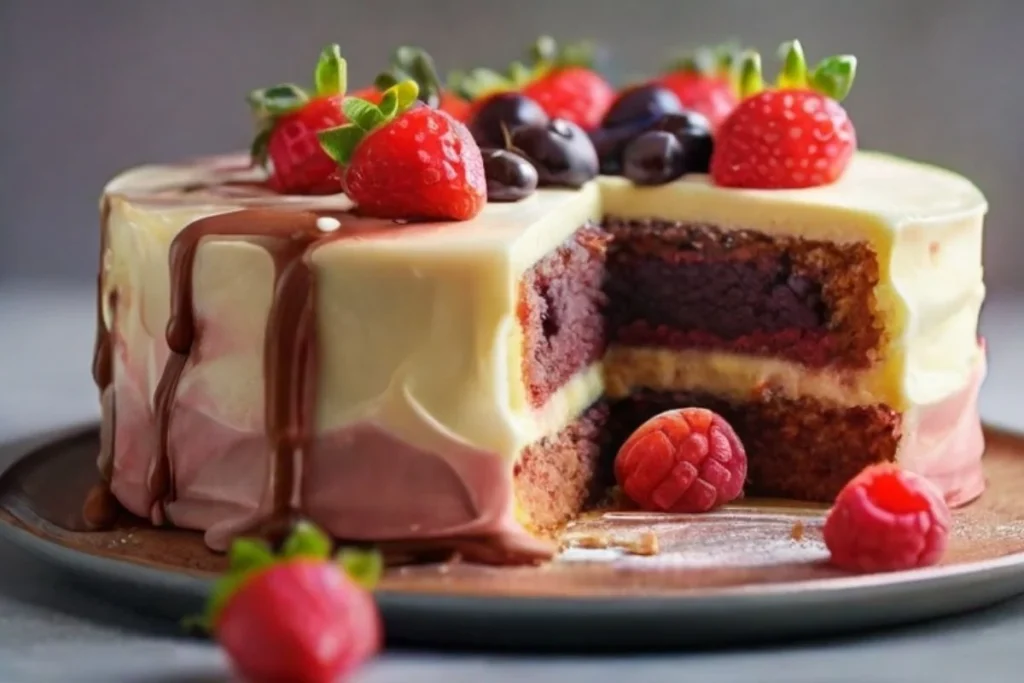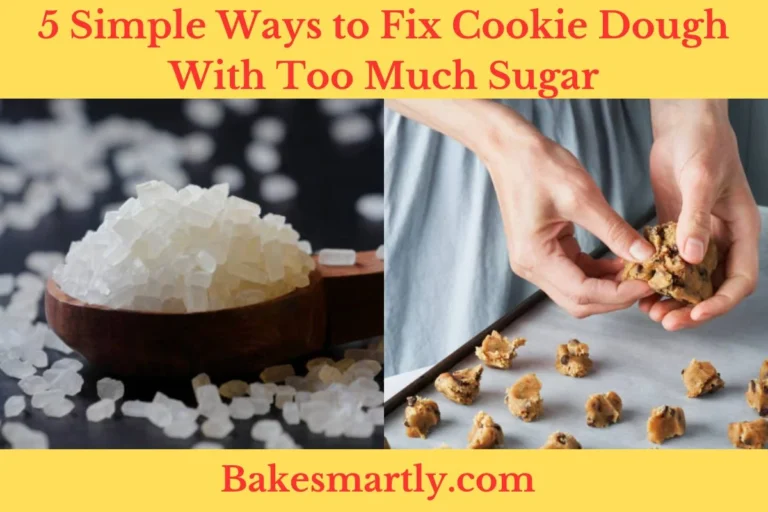
8 Essential Cake Baking Tips Every Beginner Should Know
Are you just starting as a baker and want to nail the art of making cakes? Well, you’re in the right place! In this article, we’ll give you 8 essential cake baking tips that will help you become a pro in the kitchen.
Whether you’re a baking newbie or already have a bit of experience, these tips will enhance your cake-making skills, ensuring you achieve that perfect, moist, and delicious cake every time.
We also share 10 common mistakes that beginners often make in cake baking, and we’ll show you how to avoid them. By following these baking tips, you’ll be on your way to whipping up irresistible cakes that will be a hit on any occasion.
Table of Contents
Toggle1. Essential Tools and Equipment for Cake Baking
Before you start measuring and mixing, it’s crucial to have the right tools and equipment. Gathering these essentials ensures a seamless baking process and sets the stage for success.
Invest in the following:
- Measuring Tools: Accurate measurements are key to successful baking. Purchase measuring cups and spoons for both dry and wet ingredients.
- Mixing Bowls: Have a variety of mixing bowls in different sizes to accommodate various recipes.
- Mixer: While hand mixing is possible, an electric mixer expedites the process, making it more efficient.
- Cake Pans: Choose quality cake pans in different shapes and sizes. Consider non-stick pans for easy removal.
- Oven Thermometer: Ensure your oven is set to the correct temperature with an oven thermometer.
2. Understanding the Ingredients for Cake Baking
To create a delectable cake, it’s essential to understand the role each ingredient plays in the recipe. Familiarize yourself with these basics:
- Flour: Different types of flour yield different textures. All-purpose flour is versatile and suitable for most recipes.
- Sugar: Besides sweetness, sugar adds moisture and assists in leavening.
- Butter: Provides flavor and contributes to the cake’s texture. Ensure it’s softened for easy incorporation.
- Eggs: Act as a binder and provide structure. Use fresh eggs for the best results.
- Baking Powder and Baking Soda: Leavening agents that help the cake rise. Follow the recipe for the correct proportions.
- Vanilla Extract: Enhances flavor. Use pure vanilla extract for the best taste.
3. Preparing the Cake Batter
Creating the perfect cake batter requires precision and attention to detail. Follow these steps:
- Measure Accurately: Use the correct measuring tools and follow the recipe measurements diligently.
- Room Temperature Ingredients: Allow ingredients like butter and eggs to reach room temperature for even mixing.
- Mixing Techniques: Understand different mixing techniques, such as creaming butter and sugar for a light and fluffy texture.
- Consistency Matters: Achieve a smooth and lump-free batter. The consistency should allow the batter to fall easily from the spoon.
4. Baking the Cake
Once the batter is ready, it’s time to bake. Pay attention to the following:
- Preheat the Oven: Always preheat your oven to the temperature specified in the recipe. This ensures even baking.
- Positioning Cake Pans: Place cake pans in the center of the oven for uniform heat distribution.
- Follow Baking Time: Stick to the recommended baking time, but keep an eye on visual cues like golden edges and a springy top.
5. Testing for Doneness
Determining when your cake is done is crucial to avoid undercooked or overcooked results. Use these methods:
- Toothpick Test: Insert a toothpick into the center of the cake. If it comes out clean or with a few moist crumbs, the cake is done.
- Spring-Back Test: Gently press the center of the cake; it should spring back.
6. Cooling and Removing the Cake from the Pan
Once the cake is baked, it needs time to cool. Follow these steps:
- Cooling Time: Allow the cake to cool in the pan for 10-15 minutes before transferring it to a wire rack.
- Loosening the Edges: Use a butter knife to gently loosen the edges of the cake from the pan before removing.

7. Frosting and Decorating the Cake
Adding the finishing touches is where the magic happens. Consider these tips:
- Fully Cooled Cake: Ensure the cake is completely cool before applying frosting to prevent it from melting.
- Simple Frosting Techniques: Start with basic frosting techniques before attempting intricate designs.
- Choosing the Right Frosting: Different frostings have different textures and flavors. Choose a frosting that complements your cake. Common choices include buttercream, cream cheese frosting, ganache, or fondant
- Coloring Frosting: If you’re using colored frosting, use gel or paste food coloring for vibrant colors. Start with a small amount and add more as needed.
8. Storing and Serving the Cake
Preserve the freshness of your cake and present it perfectly with these steps:
- Airtight Storage: Store leftover cake in an airtight container to maintain moisture.
- Refrigeration: If your cake has perishable ingredients like cream, refrigerate it.
- Serving: Enjoy your cake at room temperature for the best flavor and texture.

10 Common Mistakes to Avoid in Cake Baking for Beginners
Baking a cake is a fun journey, but for beginners, it can be a bit tricky. To make sure your cake turns out great, it’s important to know about common mistakes in the kitchen. Here are ten things to watch out for, so you can bake your cake with confidence.
Forgetting to Preheat the Oven
Oops: One of the most common mistakes is not preheating the oven before putting the cake in.
Fix: Always preheat your oven to the temperature the recipe says. Preheating is crucial for the chemical reactions that make your cake rise and bake evenly.
Wrong Measurements
Oops: Guessing or approximating measurements can mess up your cake. Baking is like a science experiment, and you need to be precise.
Fix: Get some good measuring cups and spoons. Follow the recipe carefully and measure each ingredient correctly.
Mixing Too Much or Too Little
Oops: Mixing the batter until it’s super smooth can make your cake tough. On the other hand, not mixing enough can give you a lumpy batter.
Fix: Learn different mixing techniques and follow the recipe. Stop mixing when the ingredients are just combined for a soft and moist cake.
Opening the Oven Too Soon
Oops: Being impatient and opening the oven door too early can make your cake collapse.
Fix: Trust the baking time in the recipe. Use the oven light and window to check on the cake without opening the door.
Using Cold Ingredients
Oops: Using cold ingredients, especially butter and eggs, can mess up your batter and affect the texture of the cake.
Fix: Let ingredients like butter and eggs come to room temperature before using them. This makes the batter smoother and more even.
Skipping the Sifting
Oops: Not sifting dry ingredients can give you lumps in the batter, messing with the texture of the cake.
Fix: Always sift flour and other dry ingredients. It gets rid of lumps and makes the flour lighter for a fluffier cake.
Not Testing for Doneness Right
Oops: Relying only on the baking time can give you a cake that’s undercooked or overcooked.
Fix: Use the toothpick test. Stick a toothpick in the center of the cake; if it comes out clean or with a few moist crumbs, the cake is ready. Also, look for golden edges and a springy top.
Ignoring Cooling Time
Oops: Frosting or cutting a cake before it’s cool can make it messy.
Fix: Be patient. Let the cake cool in the pan for the recommended time before moving it to a wire rack.
Using Expired Ingredients
Oops: Using ingredients that are past their prime can mess with the taste and quality of the cake.
Fix: Check expiration dates on things like baking powder and baking soda. Make sure your pantry has fresh, good-quality ingredients.
Forgetting to Grease and Flour Cake Pans
Oops: Not greasing and flouring pans properly can make the cake stick and hard to get out.
Fix: Grease the pan well with butter or cooking spray, covering all corners. Sprinkle some flour and tap out the extra for a non-stick surface.
Frequently Asked Questions (FAQS)
Can I substitute ingredients in a cake recipe?
Substituting ingredients can alter the texture and taste. It’s best to follow the recipe for consistent results.
How do I prevent my cake from sticking to the pan?
Ensure proper greasing and flouring of the pan. Using parchment paper in the bottom also helps prevent sticking.
Why did my cake sink in the middle?
Overmixing, underbaking, or opening the oven door too early can cause a cake to sink. Follow the recipe and avoid these pitfalls.
Can I use margarine instead of butter in a cake?
While it’s possible, the flavor and texture may be affected. Butter is recommended for the best results.
Cake Baking Tips For Beginners | Final Thoughts
In conclusion, getting good at baking awesome cakes means finding the right balance between skill, accuracy, and knowing your ingredients well. With these 8 essential tips, from picking the right tools to nailing the frosting, you’re all set to boost your baking game.
Plus, being mindful of and steering clear of the common mistakes we talked about ensures a smoother baking journey. Remember, patience is crucial – from heating up the oven to letting the cake cool properly.
Embrace these pointers, and soon you’ll be treating your friends and family to perfectly baked, moist, and delicious cakes for any celebration. Happy baking!
Lindsey Mackenzie
About me
Hi there! I’m Lindsey Mackenzie, the founder of Bake Smartly. Baking has been my passion since childhood, growing up in my father’s bakery. With Bake Smartly, I’m excited to share my love for all things sweet and savory. Join me on this delicious journey as we whip up scrumptious treats and sprinkle joy into every bite!






